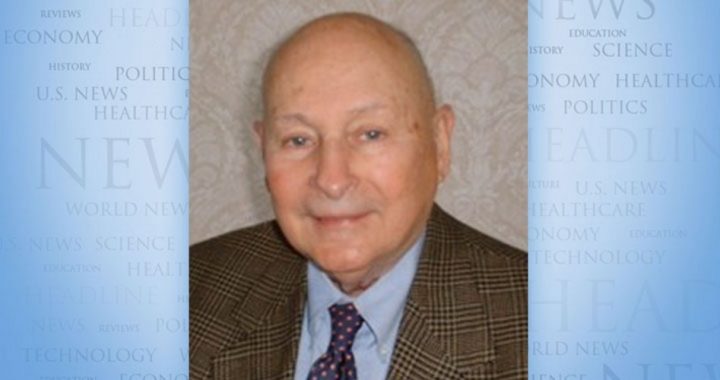
Which country has the world’s worst education system? According to the PISA (Programme for International Student Assessment) tests taken in 2012 by 15-year-olds in 65 countries, the South American country of Peru was at the bottom.
The overall average score for all countries in Math was 494, Reading 496, and Science 501. The top achiever was Shanghai-China with scores for Math 613, Reading 570, and Science 580.
The United States, 36th in rank, scored 481 in Math, 497 in reading, and 497 in Science.
Viet Nam (17th), Slovenia (21st), and Poland (13th) did better than the United States. Peru’s score at the bottom was 368 in Math, 384 in reading, and 373 in Science. Mexico (ranked 53) scored 413 in Math, 424 in Reading, and 415 in Science, which explains why so many Mexican parents want their children to be educated in American schools.
Countries doing worse than Mexico include Uruguay, Costa Rica, Brazil, Argentina, Colombia, and several Muslim countries.
But it is somewhat shocking to learn that Latin America has some of the worst education systems in the world. According to an article in the Christian Science Monitor Weekly, January 12, 2015, Teach for America has been aware of this problem ever since the PISA test scores made these deplorable rankings public. As a result there are now such programs as Teach for Mexico, Teach for Peru, Teach for Chile, and others.
Teach for America was created in 1990 by Wendy Kopp, a Princeton graduate, on the premise that what the public schools in ghetto neighborhoods needed were bright, young dedicated university graduates willing to teach and uplift the children of the poor. According to its Mission Statement:
Teach For America is an American nonprofit organization whose mission is to “eliminate educational inequity by enlisting high-achieving recent college graduates and professionals to teach” for at least two years in low-income communities throughout the United States.
In other words, poor kids are not getting a fair shake in America’s public schools. Yet, back in the 1930s, poor kids in New York City got as good an education as those in the more affluent suburbs. Their teachers were conservative women who knew how to teach the basics. They had not yet been infected with the progressive insanity that took over the schools and began teaching children to read English as if it were Chinese. The decline in literacy among students led Dr. Rudolf Flesch in 1955 to write his famous book, Why Johnny Can’t Read. He wrote: “The teaching of reading — all over the United States, in all the schools, and in all the textbooks—is totally wrong and flies in the face of all logic and common sense.”
We don’t know if anyone at Teach for America ever heard of Rudolf Flesch or read his book or any of the other books on the reading problem. That may account for why Deborah Appleman, professor of Educational Studies at Carleton College, would write in the Minneapolis Star-Tribune in 2009, “Implicit in Teach for America’s approach is the insidious assumption that anyone who knows a subject and is willing to be with kids can teach — with little training.”
Obviously, Wendy Kopp, whose organization gets hundreds of millions of dollars from major establishment sources, knows what is politically correct and not. She is obviously aware that progressive socialists have such a massive control over every aspect of American education, that Teach for America can do little outside those tight boundaries.
Indeed, a comparison study in 2004 between regular teachers and Teach for America instructors found that students taught by Teach for America instructors performed better in math than those taught by regular teachers, but the improvement was small and there was no difference in reading performance between the two groups. It’s that politically correct performance on the part of TFA that has made Wendy a welcome presenter at such big CFR events as the insider World Economic Forum. Indeed, TFA is a member of the Global Education Network.
Which probably accounts for why the TFA idea has spread to South America. TFA’s philosophy is what motivated Teach for Mexico’s co-founder and executive officer Erik Ramirez-Ruiz. He told the Monitor, “We wanted to find a way to help teachers and principals already in schools, without being confrontational. We try to complement the schools with things they didn’t have before. Maybe they are understaffed or they don’t have anyone properly trained to teach English. It’s a collaboration.” The Monitor goes on:
In Mexico, about 70 percent of public school instructors failed their teaching exam in 2012. [According to Mineko Matsumoto, in her second year with Teach for Mexico] Many of her high-schoolers can’t read numbers with more than three digits, and struggle to distinguish between a city, country, and a continent, she says.
Teach for Peru targets rural schools that don’t get state-trained teachers. After five years in public classrooms, the organization has achieved success in raising test scores among students who were one or even two school years behind. It has also gained financial support from mining companies, banks, and private foundations. Franco Mosso, cofounder of Teach for Peru, tells us that TFP alumni have joined Peru’s Ministry of Education, while others have created education nonprofits.
The Teach For organizations in South America have also had to face criticism for putting individuals with little professional training into classrooms. In America, TFA’s record for improving education in the public schools is somewhat wanting. Primary schools are still teaching children to read by the sight method. In Bellingham, Washington, the full-day kindergarten is teaching children to read with wordless picture books. How much worse can it get?
E. D. Hirsch, in a December 2012 article on reading and income inequality, wrote:
The first step to fight income inequality: Do a better job of teaching kids to read. For all the talk about income inequality in the United States, there is too little recognition of education’s role in the problem. Yet it is no coincidence that, as economist John Bishop has shown, the middle class’s economic woes followed a decline in 12th-grade verbal scores, which fell sharply between 1962 and 1980—and, as the latest news confirms, have remained flat ever since.
The federal government reported this month that students’ vocabulary scores on the National Assessment of Educational Progress have seen no significant change since 2009. On average, students don’t know the words they need to flourish as learners, earners or citizens.
We hope that Wendy Kopp has read what Hirsch has written on education during the last few decades. He is the only liberal educator with a plan to reform the public schools that could work. Unfortunately, he isn’t politically correct enough for the Obama administration and its secretary of education.
As for Teach for America, we get the distinct feeling that their people are too politically correct and will not read the forbidden books by authors such as John Taylor Gatto, Charlotte Iserbyt, and Pat Groff. As university elitists, Teach for America’s alumni, with all their good intentions and love for the poor, have made some improvements but not enough to raise the hopes of millions of poor children still stuck in failing public schools. The rebellion of the poor against standardized tests means that curriculum reform by liberals will create not only educational confusion but also more frustration. Sadly we doubt that Wendy Kopp’s efforts in South America will produce better results.



